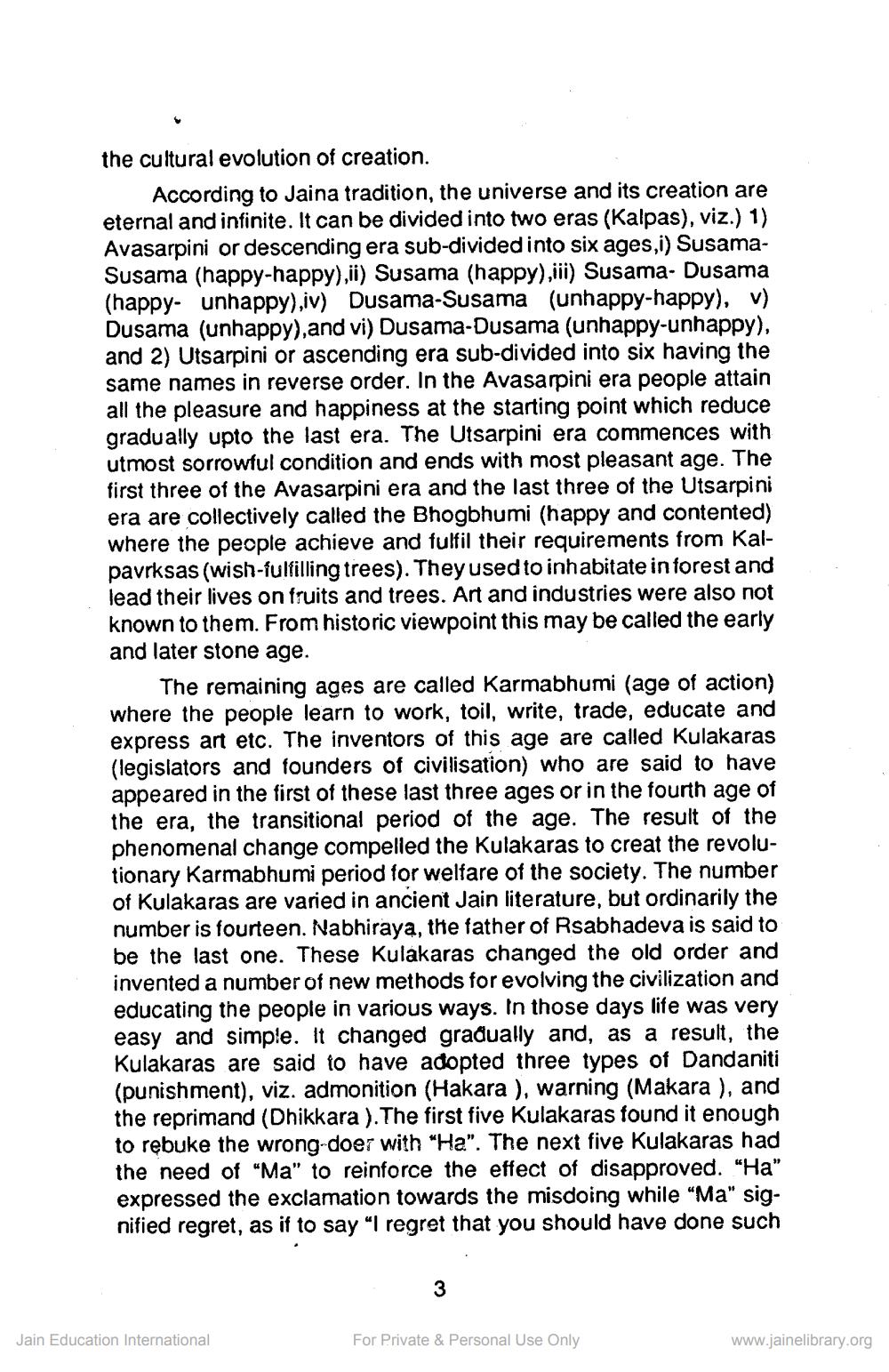Book Title: Jainism and Mahavira Author(s): Bhagchandra Jain Bhaskar Publisher: Digambar Jain Sahitya Sanskriti Sanskaran Samiti View full book textPage 9
________________ the cultural evolution of creation. According to Jaina tradition, the universe and its creation are eternal and infinite. It can be divided into two eras (Kalpas), viz.) 1) Avasarpini or descending era sub-divided into six ages,i) SusamaSusama (happy-happy),ii) Susama (happy),iii) Susama- Dusama (happy- unhappy),iv) Dusama-Susama (unhappy-happy), v) Dusama (unhappy), and vi) Dusama-Dusama (unhappy-unhappy), and 2) Utsarpini or ascending era sub-divided into six having the same names in reverse order. In the Avasarpini era people attain all the pleasure and happiness at the starting point which reduce gradually upto the last era. The Utsarpini era commences with utmost sorrowful condition and ends with most pleasant age. The first three of the Avasarpini era and the last three of the Utsarpini era are collectively called the Bhogbhumi (happy and contented) where the people achieve and fulfil their requirements from Kalpavrksas (wish-fulfilling trees). They used to inhabitate in forest and lead their lives on fruits and trees. Art and industries were also not known to them. From historic viewpoint this may be called the early and later stone age. The remaining ages are called Karmabhumi (age of action) where the people learn to work, toil, write, trade, educate and express art etc. The inventors of this age are called Kulakaras (legislators and founders of civilisation) who are said to have appeared in the first of these last three ages or in the fourth age of the era, the transitional period of the age. The result of the phenomenal change compelled the Kulakaras to creat the revolutionary Karmabhumi period for welfare of the society. The number of Kulakaras are varied in ancient Jain literature, but ordinarily the number is fourteen. Nabhiraya, the father of Rsabhadeva is said to be the last one. These Kulakaras changed the old order and invented a number of new methods for evolving the civilization and educating the people in various ways. In those days life was very easy and simple. It changed gradually and, as a result, the Kulakaras are said to have adopted three types of Dandaniti (punishment), viz. admonition (Hakara ), warning (Makara ), and the reprimand (Dhikkara ). The first five Kulakaras found it enough to rebuke the wrong-doer with "Ha". The next five Kulakaras had the need of "Ma" to reinforce the effect of disapproved. "Ha" expressed the exclamation towards the misdoing while "Ma" signified regret, as if to say "I regret that you should have done such Jain Education International 3 For Private & Personal Use Only www.jainelibrary.orgPage Navigation
1 ... 7 8 9 10 11 12 13 14 15 16 17 18 19 20 21 22 23 24 25 26 27 28 29 30 31 32 33 34 35 36 37 38 39 40 41 42 43 44 45 46 47 48 49 50 51 52 53 54 55 56 57 58 59 60 61 62 63 64 65 66 67 68
